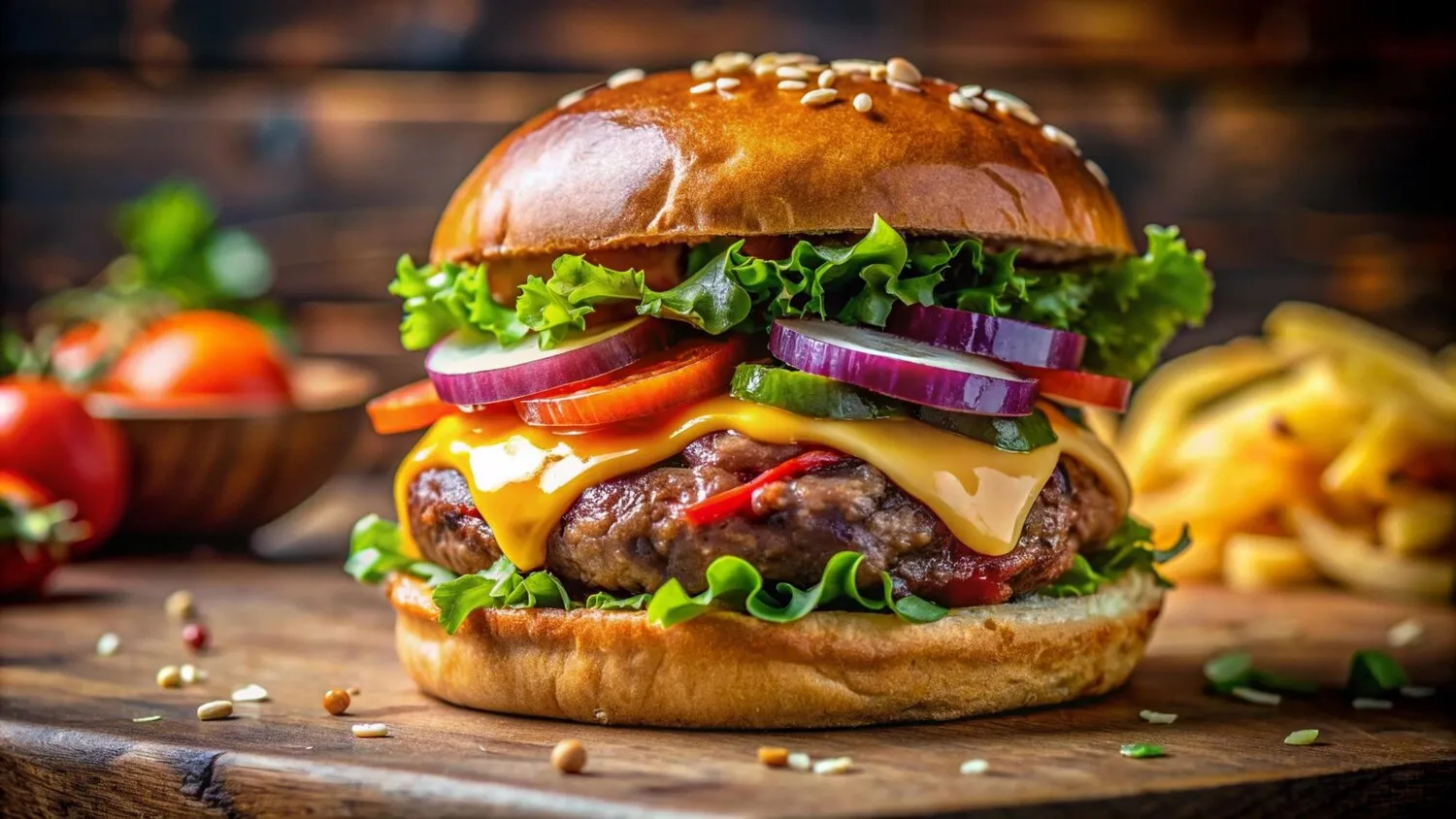
Burger
Based on reviews and mentions, Gabin Food is known for its burgers. Specific types and ingredients vary, but they are consistently mentioned positively.
Nutrition Facts
* The % Daily Value (DV) tells you how much a nutrient in a serving of food contributes to a daily diet. 2,000 calories a day is used for general nutrition advice.
The modern burger's origins are debated, with various claims attributing its creation to different individuals and events in the late 19th and early 20th centuries. However, the combination of ground beef patty served between bread slices gained prominence during the early 20th century, evolving from simpler forms of beef sandwiches and influenced by German immigrants introducing Hamburg-style steak.
The burger has become a quintessential American food, deeply embedded in the nation's culinary landscape and popular culture. It is a symbol of casual dining, convenience, and affordability, often associated with fast food chains and backyard barbecues.
American Icon
The burger is widely recognized as an American staple and a symbol of American cuisine.
Fast Food Culture
The burger is central to fast food culture, with numerous chains specializing in burger variations.
Social Gatherings
Burgers are frequently served at social gatherings, such as barbecues, picnics, and sporting events.
Regional Variations
Many regions have their own unique takes on the burger, such as the Juicy Lucy in Minneapolis or the Green Chile Cheeseburger in New Mexico.
The burger boasts a savory combination of beef, complemented by the tangy, sweet, and acidic notes from toppings and condiments. Often, a slightly toasted bun adds textural contrast and a subtle sweetness.
The core flavor profile revolves around the rich, umami taste of the ground beef patty. Common toppings like cheese (cheddar, American, Swiss) introduce creamy, salty, and sometimes sharp notes. Vegetables such as lettuce, tomato, and onion provide freshness and varying degrees of sweetness and pungency. Condiments like ketchup offer sweetness and tang, mustard contributes sharpness and acidity, and mayonnaise provides creaminess and richness. Pickles deliver a sour and crunchy element. The bun, often lightly toasted, adds a subtle sweetness and bready texture.
Meat Quality Matters
Use high-quality ground beef with a good fat content (around 20%) for optimal flavor and juiciness.
Don't Overwork the Meat
Handle the ground beef gently when forming patties to avoid a tough texture.
Proper Cooking Temperature
Cook burgers to the appropriate internal temperature for safety and desired doneness (medium-rare: 130-135°F, medium: 140-145°F, medium-well: 150-155°F, well-done: 160°F+).
Toast the Bun
Toasting the bun prevents it from becoming soggy and adds a pleasant textural contrast.
Layering is Key
Layer toppings strategically to prevent slippage and ensure balanced flavors in each bite. Heavier, wetter ingredients should be closer to the patty to minimize bun sogginess.
Explore additional Burgers dishes and restaurants
Explore BurgersDiscover top dining spots and culinary experiences in Udine.
Explore UdineLearn more about the food culture, restaurant scene, and culinary heritage of Italy.
Explore Italy